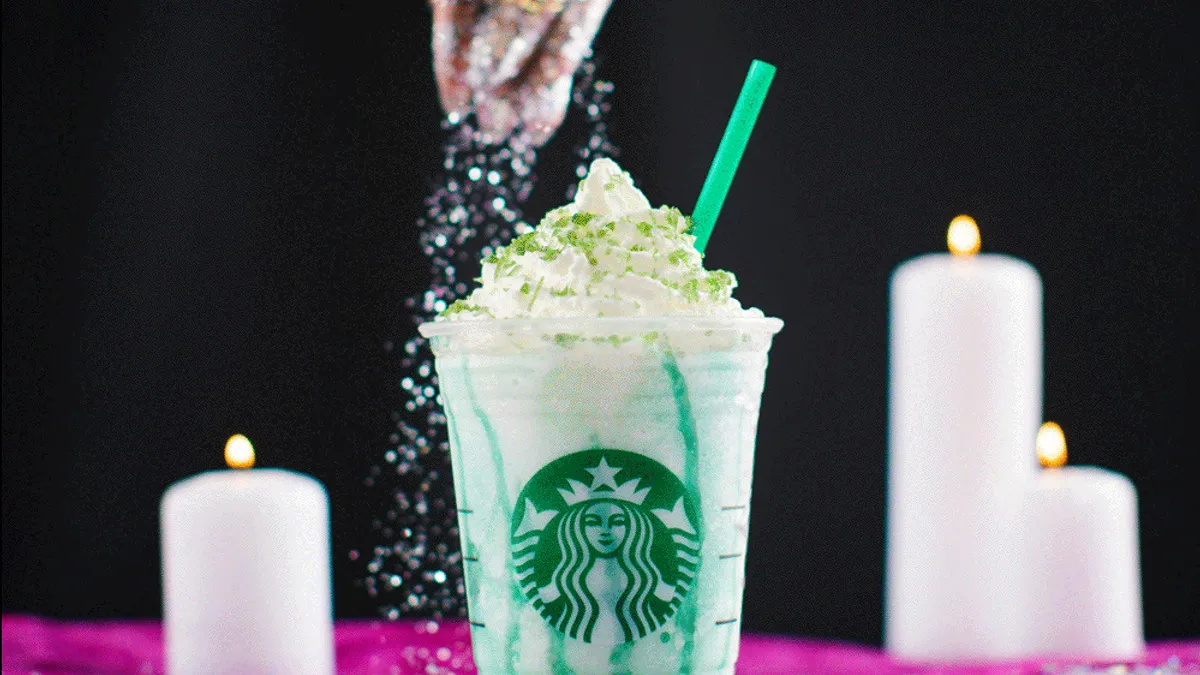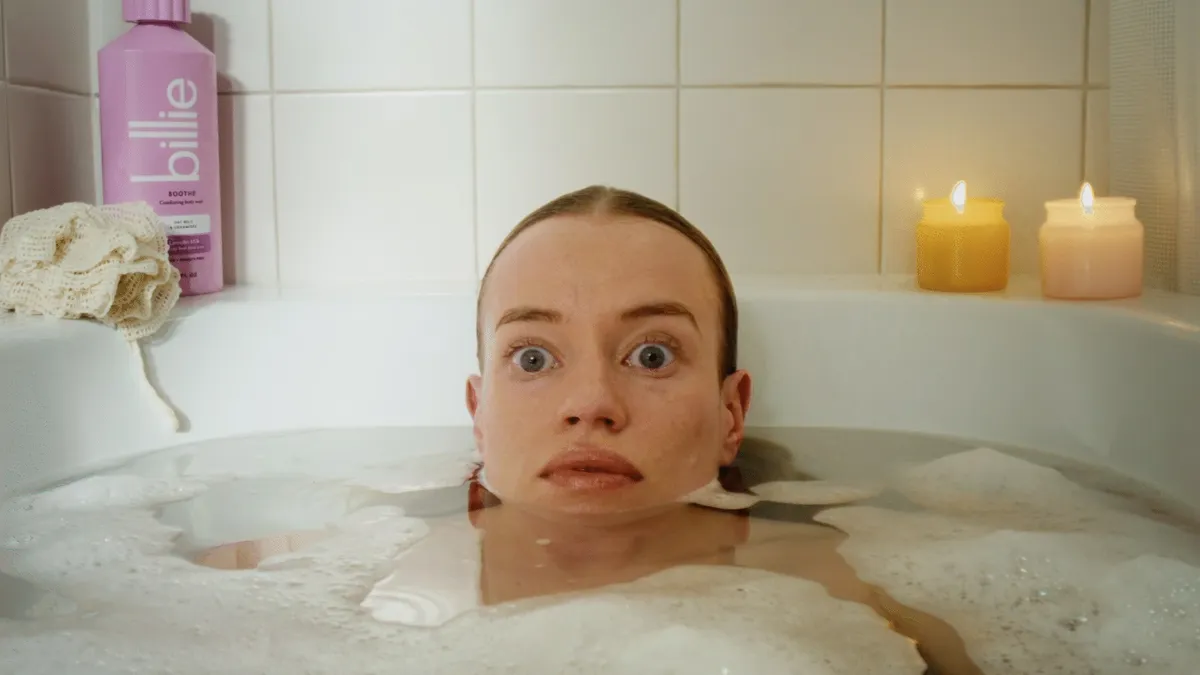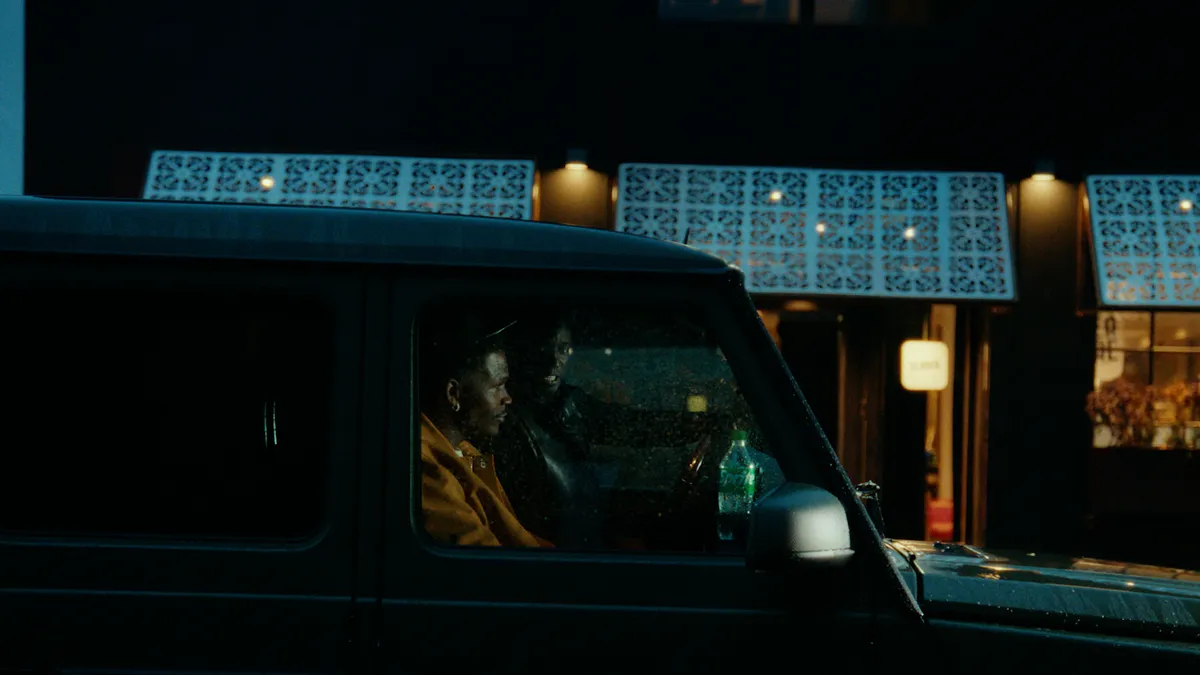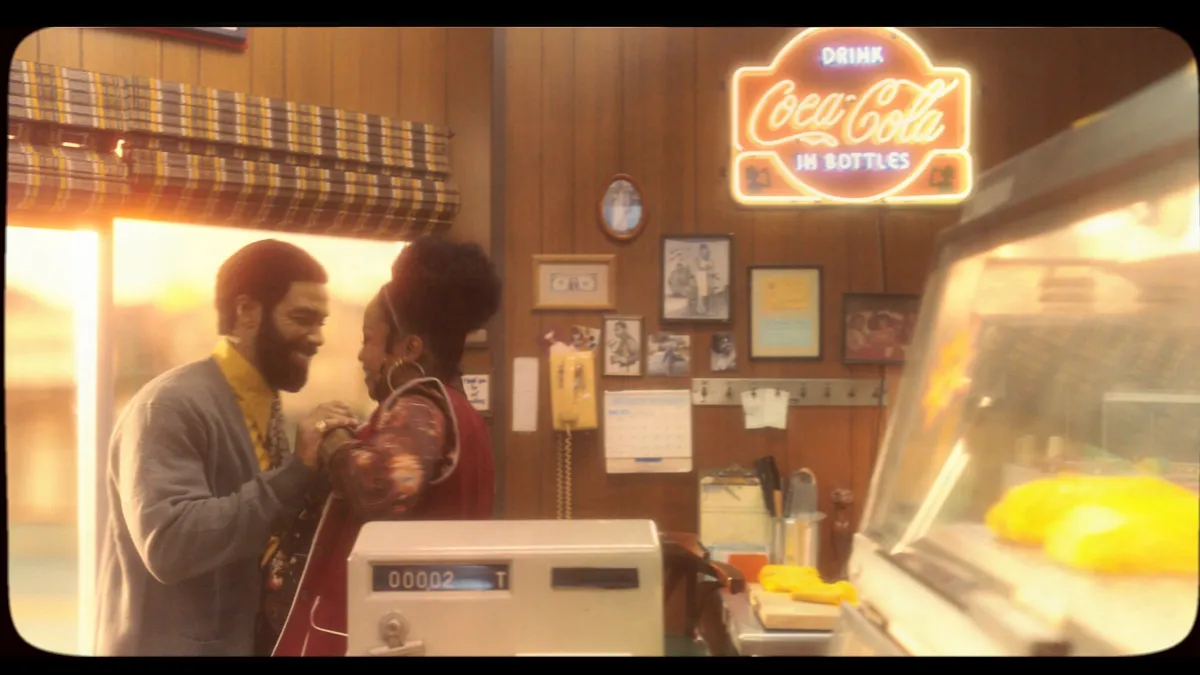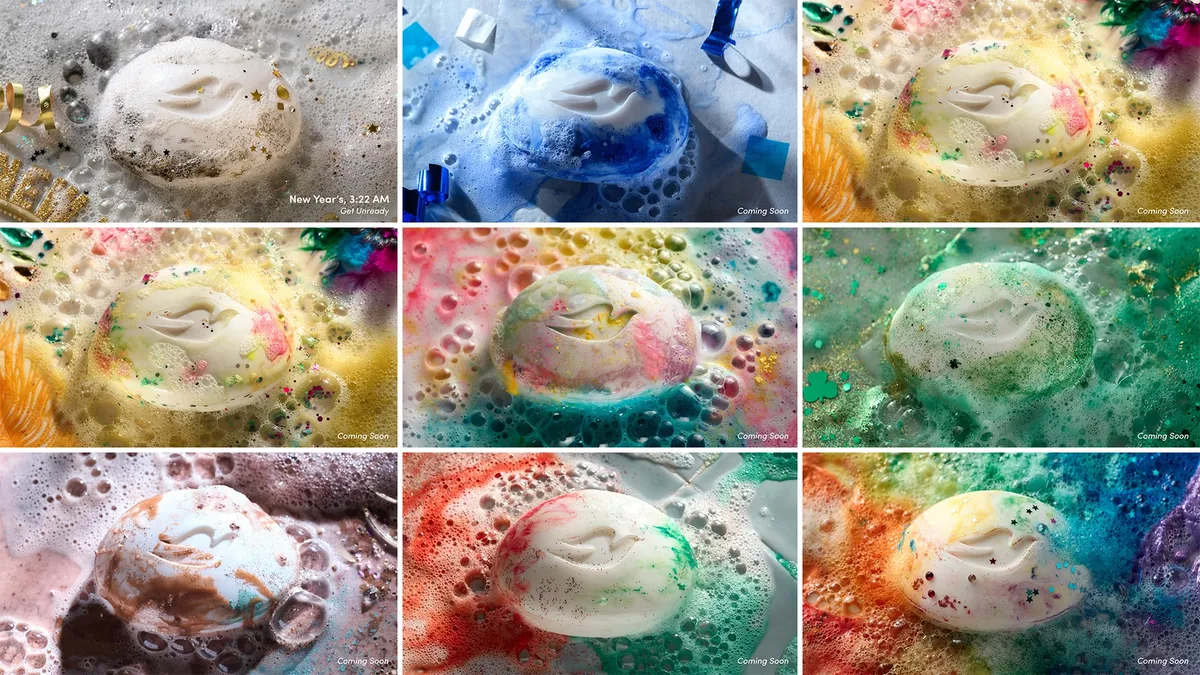Campaign Trail is our look at some of the best and worst new creative efforts from the marketing world.
Spring is officially here — though you wouldn't know judging by the weather in some parts of the U.S. — meaning marketers are rolling out their fresh seasonal campaigns. This week, Marketing Dive looks at how Starbucks is trying to recapture a viral success it deployed around this time last year, and also an unusual T-shirt connected to AR:
The future is unclear for Starbucks' limited-edition Crystal Ball Frappuccino
The rundown: Starbucks once again is offering a limited-edition themed Frappuccino designed to spur social conversation. The latest entry is called the Crystal Ball Frappuccino — available March 22-26 — which is cream based and topped with peach-flavored whipped cream and turquoise sparkles.
The gimmick this time is that the drinks will also be sprinkled with one of three colored candy gems — vivid blue, green or purple — with each shade predicting a different future for the customer. Blue foretells adventure, green signifies luck and purple forecasts magic, wonder and enchantment. Neither customers nor baristas will know which color is in the prepackaged pouches for the candy gems, leaving customers' fortune up to fate. The roll out is supported on Starbucks' social channels, including with a GIF that shows a fortune teller's crystal ball morphing into a Frappuccino.
Gaze deep within our crystal ba...OMG it's a Frappuccino now! #CrystalBallFrappuccino
— Starbucks Coffee (@Starbucks) March 22, 2018
(Available in the US, Canada & Mexico while the magic lasts). pic.twitter.com/bYCFaeLwEO
The results: Crystal Ball Frappuccinos are silly and fun, and who doesn't need a little levity in their lives right now? The mystery around which color gems a customer will receive is likely to spur some to share their results on social media. Timing the release of the Crystal Ball Frappuccino in the spring and close to the one-year anniversary of the release of last year's popular Unicorn Frappuccino could foretell a bright future.
The Unicorn Frappuccino got a lot of attention on social media and from the press — Marketing Dive's sister publication Mobile Marketer named it the Mobile Campaign of the Year for 2017 — but the attention was more about its colorful appearance that seemed designed for sharing on Instagram than for its taste, which was reportedly overly sweet and cloying. Instagram-worthy food shoots were a big trend at that time but, while still popular, Insta-bragging has since earned somewhat of a negative connotation, which might dampen results for the latest limited-edition drink.
Subsequent picture-perfect concoctions like the Zombie Frappuccino and the Christmas Tree Frappuccino also didn't seem to get as much attention, but then again, they were introduced during holiday periods when it's tough to rise above the marketing noise from other brands, and the colder weather might've warded some off from the iced drink.
—Chantal Tode
Curiscope blends educational AR with wearable tech for 'Virtuali-Tee'
The rundown: Curiscope, a U.K.-based augmented and virtual reality content company, this week unveiled an interesting — and slightly grotesque — spin on connected apparel. The "Virtuali-Tee" is a $30 cotton T-shirt that links to the brand's free app on iOS and Android. When users hover their mobile device's camera over the wearer of the tee — or over themselves in "selfie mode" — the screen will virtually display a pumping heart, lungs and other organs on the torso that they can explore and dissect.
This sort of digital vivisection can also be experienced in 360 degrees with the use of a virtual reality headset, or for a group pseudo-surgery session via Chromecast or Airplay on TVs. Beyond the interactive organs, the screen display shows "hotspots" where an anatomy expert, Hans Glover, provides additional information and guides users through the body's vital organs.
The results: Part apparel piece, part educational toy, Curiscope's Virtuali-Tee presents a fairly novel blend of AR and wearable technology. Marketers are understandably excited about AR's potential for bridging the real world and digital experiences, but with the recent rollout of software development kits from Google and Apple, app stores have started to become inundated with AR apps and services that feel samey.
Virtuali-Tee shows how brands might convert physical objects or products into interactive screens that can provide supplemental information or even be gamified. It's unsurprising that Virtuali-Tee is being marketed largely at children, stoking curiosity while still accommodating the age segment's growing preference for mobile-based entertainment.
Curiscope's seen prior success with its efforts built around immersive content. The brand's responsible for a 360-degree YouTube video about great white sharks that's racked up over 28.6 million hits, which the company claims makes it one of the most-watched VR experiences of all time.
—Peter Adams




